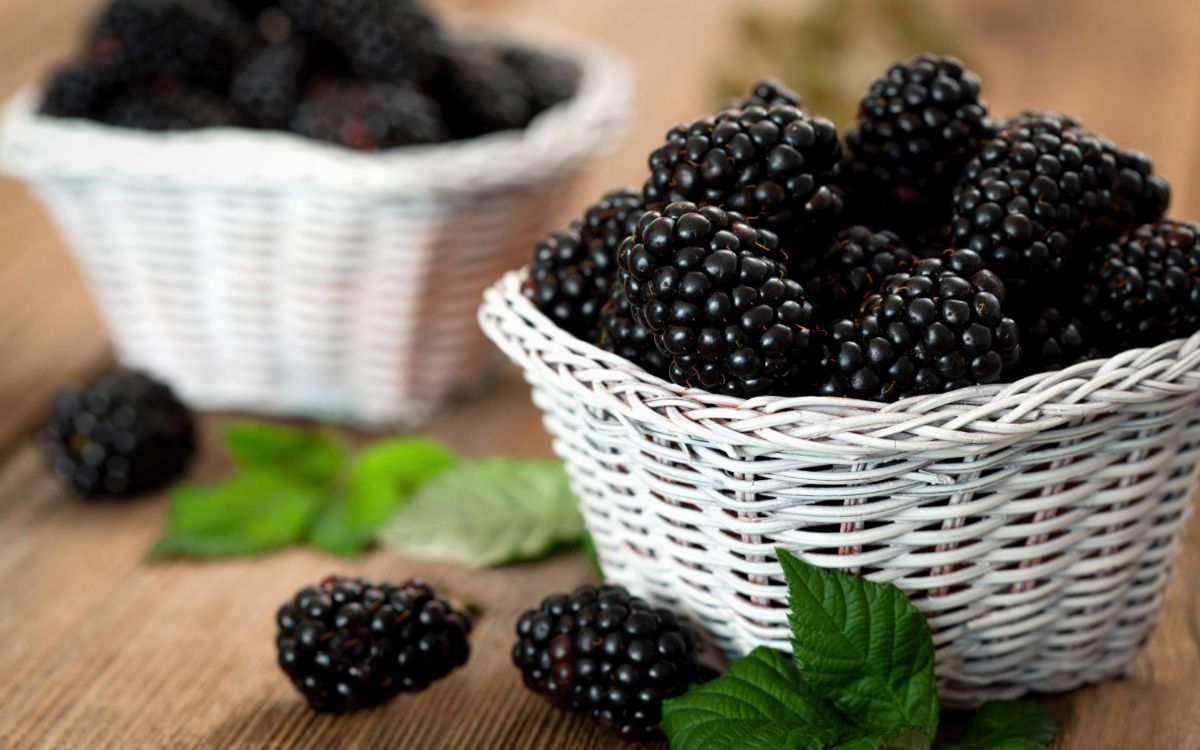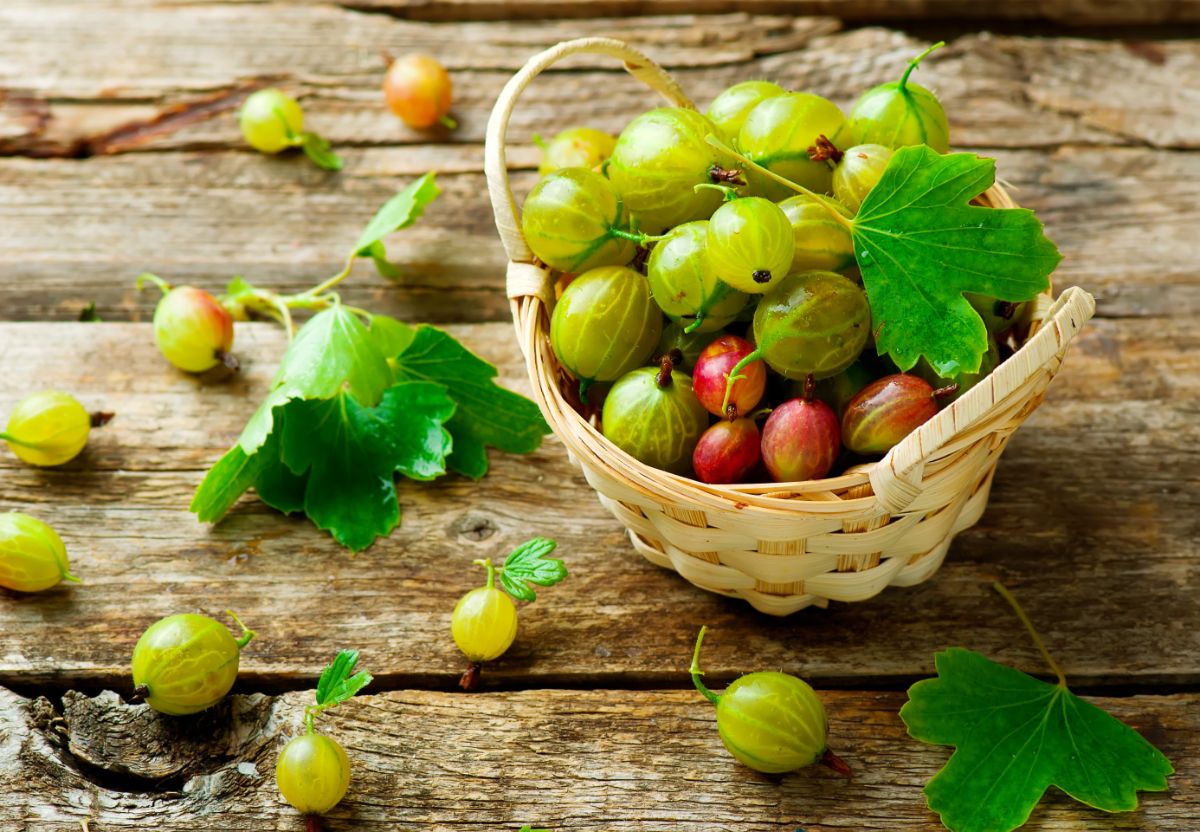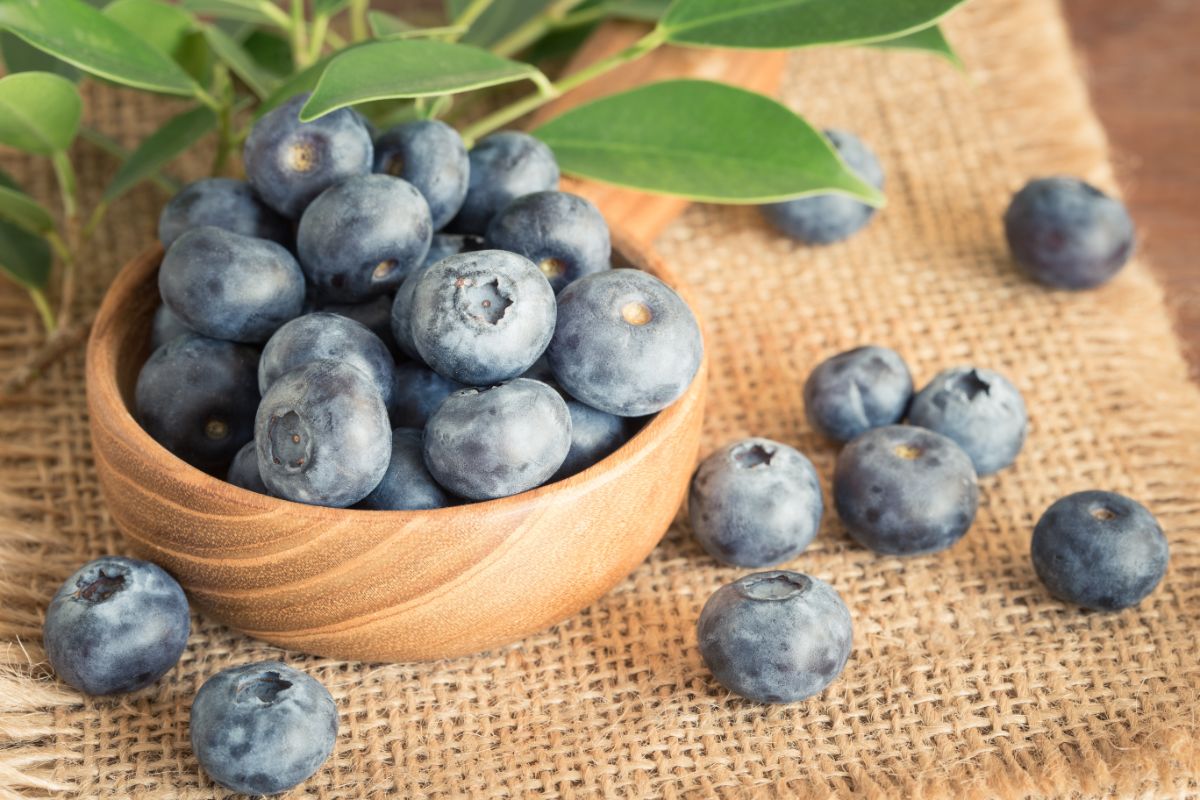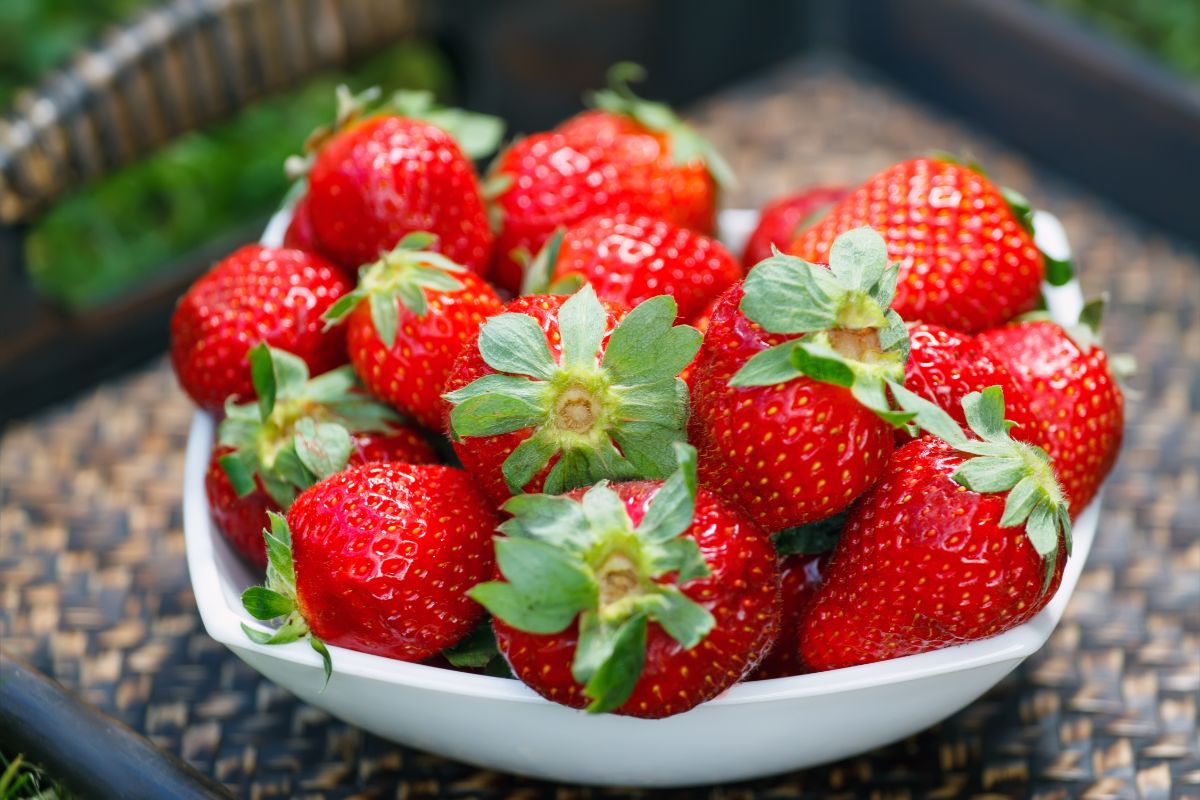7 facts about the benefits of mulberry for the human body
Mulberry (mulberry, tyutina) is quite popular in cooking. In recent years, it has received more and more attention from evidence-based medicine.
Due to the content of valuable substances, mulberry has tangible beneficial properties for our health. It is able to lower blood pressure, control blood glucose and cholesterol levels, improve digestion, prevent the development of osteoporosis and pathological fractures, and even reduce the likelihood of cancer.
Content
How it is useful – 7 facts
Below are 7 main theses about the benefits of mulberry, which are confirmed by modern research.
1. Rich vitamin and mineral composition
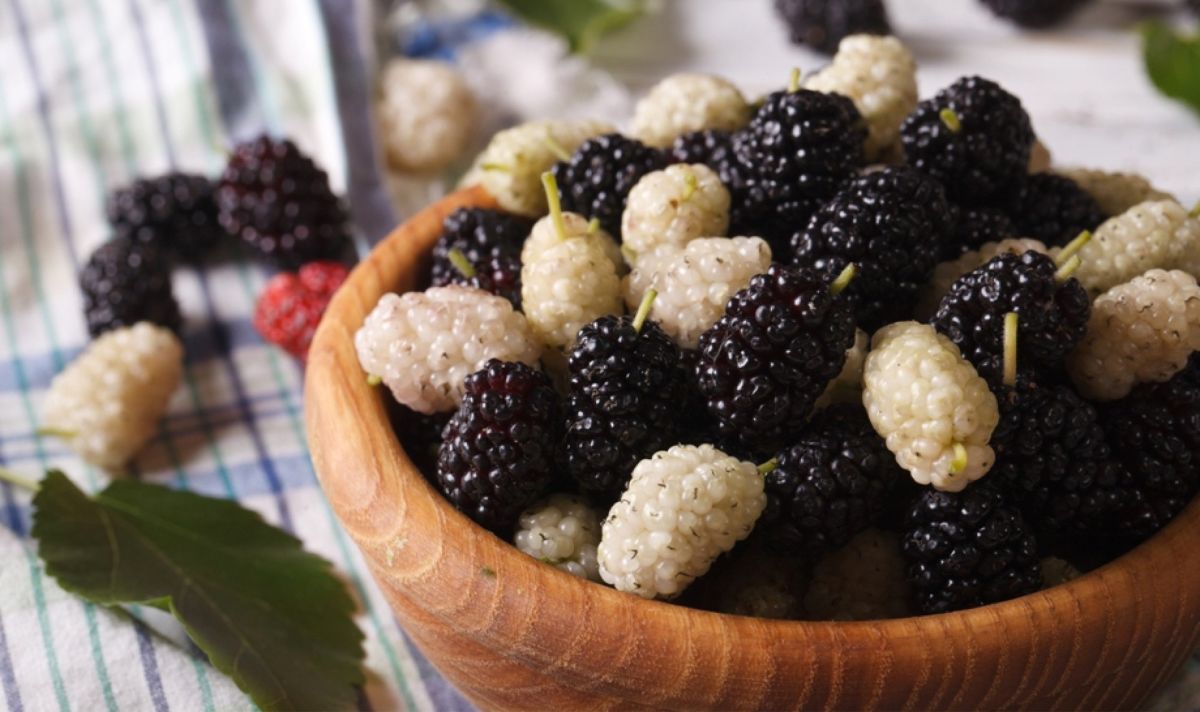
Mulberry has a low calorie content (about 43 calories per 100 grams) and contains the following groups of nutrients (per 100 grams of berries):
| Name of the component | Specific gravity or approximate percentage of daily requirement |
| proteins | 1.4 grams |
| carbohydrates | 9.8 grams |
| dietary fiber | about 2 grams |
| fats | 0.4 grams |
| Vitamin C | 61 % |
| Vitamin K | 10 % |
| Vitamin B2 | 6 % |
| Vitamin E | 4 % |
| Vitamin B6 | 3 % |
| iron | 10 % |
| potassium | 6 % |
| magnesium | 5 % |
| phosphorus | 4 % |
| calcium | 4 % |
Each nutrient is responsible for specific properties:
- Vitamin C strengthens immunity and improves the condition of the skin.
- Vitamin K1 regulates blood clotting processes.
- Vitamin E provides pronounced antioxidant effect.
- Iron is responsible for the transport of oxygen by the shaped elements of the blood.
- Potassium reduces blood pressure and prevents the development of cardiovascular diseases.
Fiber in the composition of mulberry is 75% represented Insoluble dietary fiber , which are delivered unchanged to the lower parts of the digestive tract and serve as food for friendly bacteria, that is, they are prebiotics .
Mulberry also contains many plant compounds with antioxidant activity: anthocyanins, cyanidin, chlorogenic acid, rutin and myricetin.
2. Lowering cholesterol in the blood
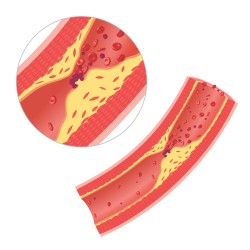 According to research
, mulberry is able to reduce the concentration of total cholesterol in the blood, as well as normalize the ratio between "beneficial" (HDL) and "harmful" (LDL) cholesterol.
According to research
, mulberry is able to reduce the concentration of total cholesterol in the blood, as well as normalize the ratio between "beneficial" (HDL) and "harmful" (LDL) cholesterol.
Thanks to this mechanism, the berry prevents the formation of atherosclerotic plaques on the walls of arterial vessels and significantly reduces the risk of developing such deadly diseases as: coronary heart disease and myocardial infarction, stroke, chronic cerebral ischemia.
It is important to note that mulberry is also is a means of preventing fatty liver hepatosis, a pathology that is often associated with atherosclerosis (due to impaired metabolism of fat and cholesterol in the body).
3. Lowering blood glucose levels
 Mulberry has a special compound in its composition – 1-deoxynogirimycin.
Mulberry has a special compound in its composition – 1-deoxynogirimycin.
This substance inhibits the enzymes of the gastrointestinal tract, which are responsible for the breakdown and subsequent assimilation of carbohydrates. Similar conclusions have been drawn Chinese and Japanese by experts.
Therefore, mulberry fruits can be used for additional correction of blood sugar levels by persons suffering from type II diabetes mellitus or having a predisposition to it (burdened family history or obesity).
4. Strengthening bones
 Mulberry is a valuable source of vitamin K, which regulates
metabolism at the bone tissue level, preventing calcium leaching.
Mulberry is a valuable source of vitamin K, which regulates
metabolism at the bone tissue level, preventing calcium leaching.
Mulberry berries can also be used to prevent the early development of osteoporosis – reducing bone density , which is observed in the elderly, as well as in women after menopause.
It should be noted separately that the berry contains phosphorus and magnesium, which reduce the likelihood of degradation of bone tissue and increase the rate of restoration of tissues of the musculoskeletal system after inflammatory pathologies (arthritis).
5. Improving the functioning of the digestive system
 Mulberry – rich source of fiber
.
Mulberry – rich source of fiber
.
According to the data scientists, fiber has the following advantages:
- Normalization of microflora. It reduces the number of pathogenic and opportunistic microorganisms, stimulates the growth of friendly colonies.
- Prevention of excessive gas formation and putrefaction in the intestine. Dietary fibers normalize the motor evacuation function of the gastrointestinal tract, ensuring timely excretion of feces.
- Improvement of enzymatic processes . Fiber improves the digestion of all types of food, with the exception of carbohydrates.
6. Probable anticancer effect
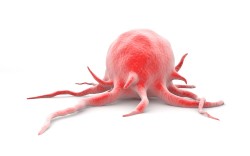 According to
according to the latest scientific data, oxidative stress, chronic inflammation and the effects of free radicals on all cells of the body are the leading causes of aging and the appearance of malignant neoplasms in any part of the body.
According to
according to the latest scientific data, oxidative stress, chronic inflammation and the effects of free radicals on all cells of the body are the leading causes of aging and the appearance of malignant neoplasms in any part of the body.
Animal experiments conducted under the guidance of scientists from Japan, demonstrate that mulberry inhibits a number of key markers of oxidative stress, reducing the risk of malignant cell transformation.
Unfortunately, no human studies have been conducted so far.
7. Benefits for children and pregnant women
 Mulberry, as already mentioned, contains
there are many valuable biologically active substances (vitamins, minerals, antioxidants) that are extremely useful for the growing body.
Mulberry, as already mentioned, contains
there are many valuable biologically active substances (vitamins, minerals, antioxidants) that are extremely useful for the growing body.
Regular intake of mulberries allows you to:
- Improve the functioning of the immune system. Mulberry reduces the risk of respiratory and systemic infections (due to the presence of a sick amount of ascorbic acid).
- Strengthen bones. The plant, even with a lack of nutrition, supports bone tissue health , reduces the risk of fractures in children.
- Ensure the coordinated development of all organ systems. The berry contains all the valuable vitamins necessary for the harmonious formation of new body cells.
Mulberry can be introduced into the diet of children starting from 6-8 months of age (no more than 1-2 berries per day). After 2-3 years – up to 50-75 grams per day.
Mulberry is also recommended for women during pregnancy. It promotes the normal functioning of the digestive system, prevents the formation of edema and gestational diabetes mellitus. The berry also improves blood supply in the "mother-placenta-fetus" system, thereby stimulating the adequate development of fetal tissues.
Harm and contraindications
 Only in isolated cases, the use of mulberries can harm a person. Contraindications are few:
Only in isolated cases, the use of mulberries can harm a person. Contraindications are few:
- Allergic reactions. Hypersensitivity to mulberry is a common phenomenon. Allergopathologies are usually pronounced and systemic in nature. There have been cases of cross-allergy (in case of allergy to birch).
- Hypotension. In some situations, mulberry increases diuresis and lowers blood pressure. When taking antihypertensive drugs, you should be especially careful.
How to use it correctly?
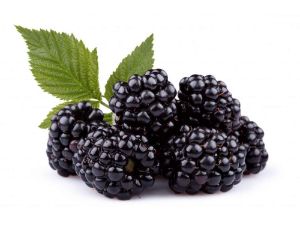 The following are the main tips for using mulberries:
The following are the main tips for using mulberries:
- The best method of admission. Berries are best eaten fresh, separate from other dishes. The recommended maximum daily allowance is up to 500 grams for adult women and men, and up to 100 grams for children from 3 to 14 years old.
- The best reception time. It is not recommended to consume mulberry in the morning on an empty stomach (due to the possible irritating effect on the mucous membranes of the stomach and duodenum), as well as before bedtime (fiber causes overload of the digestive system and can disrupt sleep).
- What is the difference between berries of different colors? Black mulberry contains more vitamin C (strengthening immunity), white mulberry contains antioxidants (anti–cancer effect).
- Application in cooking. Ripe berries are widely used for baking, compotes, wine, liqueurs. Herbal teas, decoctions and tinctures are prepared from mulberry leaves and tails.
- Application of wood and bark. Mulberry bark and wood have anti-inflammatory, antioxidant and wound healing effects. They are used to heal superficial wounds of the skin and mucous membranes, as well as for the treatment of gastritis.
Many dishes can be prepared on the basis of mulberry. Below are a few of them.
1. Compote
Ingredients:
- 1,000 grams of mulberry berries;
- 400 grams of sugar;
- Up to 3 liters of water;
- Citric acid – to taste.
Cooking recipe:
- Put water (in a saucepan) on the fire. Bring to a boil.
- Sort out the mulberry, remove the stalks, rinse thoroughly.
- Add sugar to boiling water, cook for 3-4 minutes until a homogeneous syrup is obtained.
- Pour the berries into a saucepan. Cook for another 10-12 minutes.
- Turn off the fire. Add citric acid and mix. Cool the composition to room temperature.
- Strain. The dish is ready.
2. Tea
You will need:
- 1 tbsp. l. fresh mulberry leaves;
- 200 ml of water;
- Sugar – to taste.
Recipe:
- Pour the leaves of the plant with water heated to 90 degrees. Add sugar.
- Mix thoroughly and let stand for about 15-20 minutes.
How to save for the winter?
There are several basic methods of long-term storage of berries:
- Freezing. Frozen mulberry berries retain the maximum amount of vitamins and antioxidants, as well as all their healing properties. The duration of storage in the freezer is up to 12 months.
- Drying. During the drying process, the content of dietary fiber and sugar increases several times. Dried mulberries can cause various dyspeptic disorders and increase blood sugar levels.
- Jam. This dish has an extremely high carbohydrate content, but the concentration of vitamins, minerals and antioxidants is significantly reduced. Jam is prohibited for obesity and type II diabetes mellitus.
- Tincture. The presence of alcohol is a contraindication for diseases of the heart and blood vessels such as hypertension, chronic cerebral ischemia. It is necessary to approach the tincture with caution.
Conclusion
- Mulberry provides the body with vital vitamins, minerals and antioxidants.
- With regular use, it reduces cholesterol and blood sugar levels, reduces the risk of developing diseases from the heart and blood vessels, and the digestive system.
- Mulberry is also recommended during pregnancy (to prevent complications).
